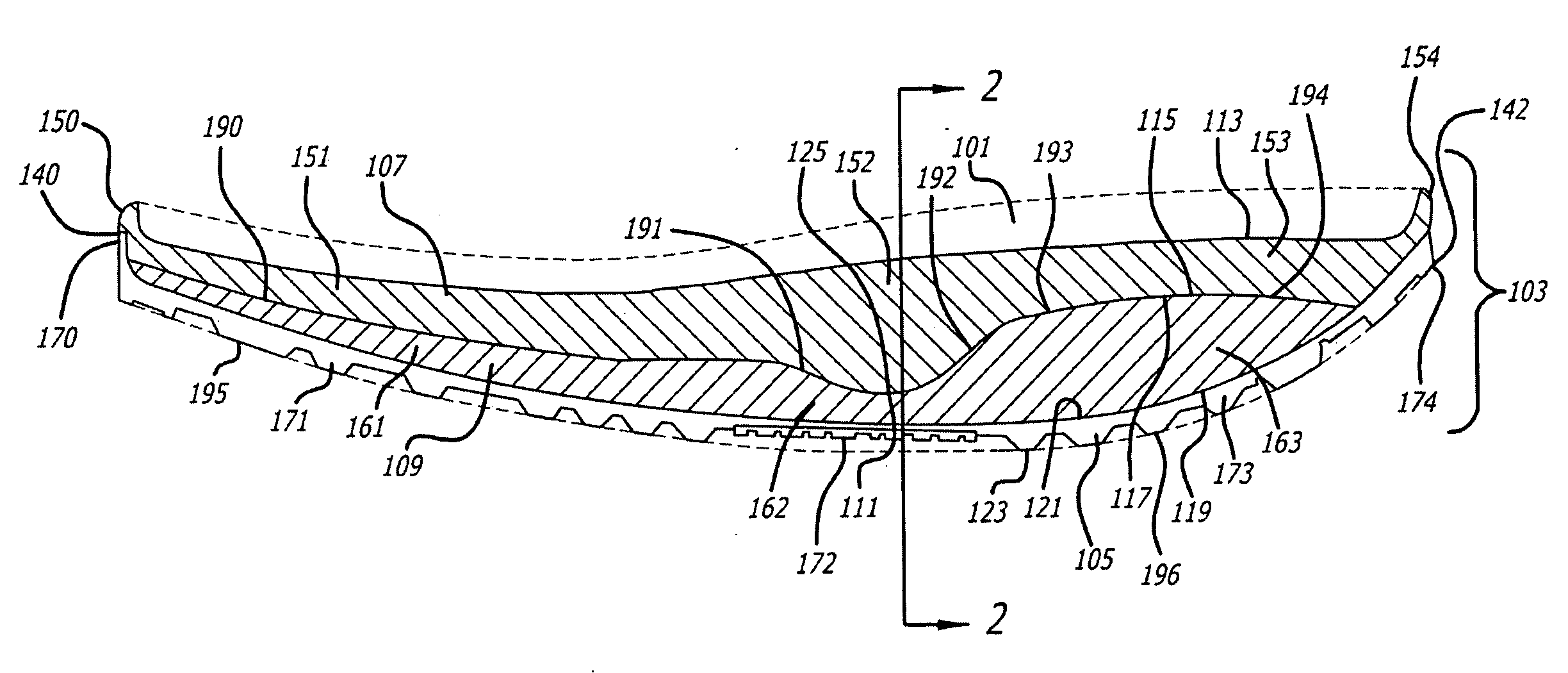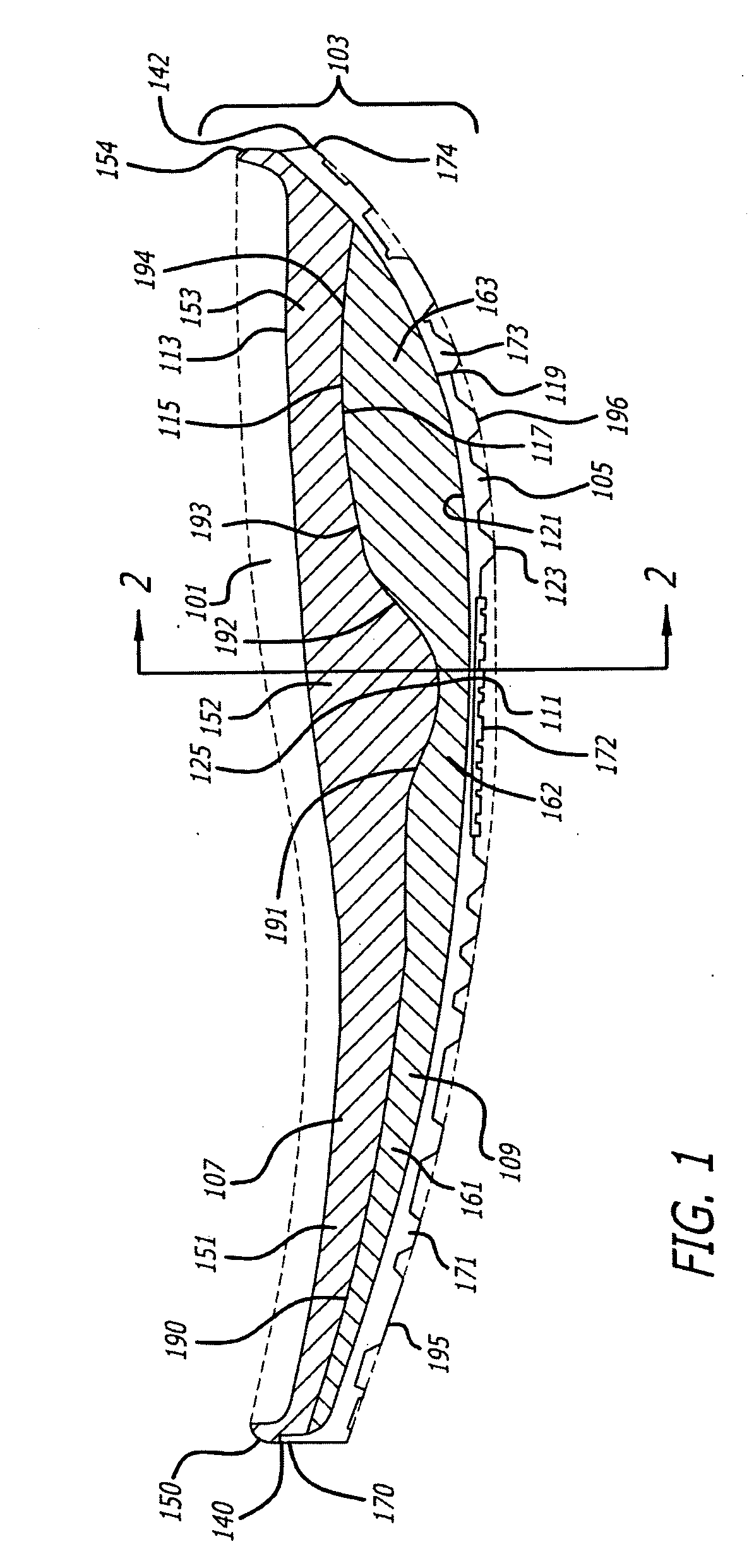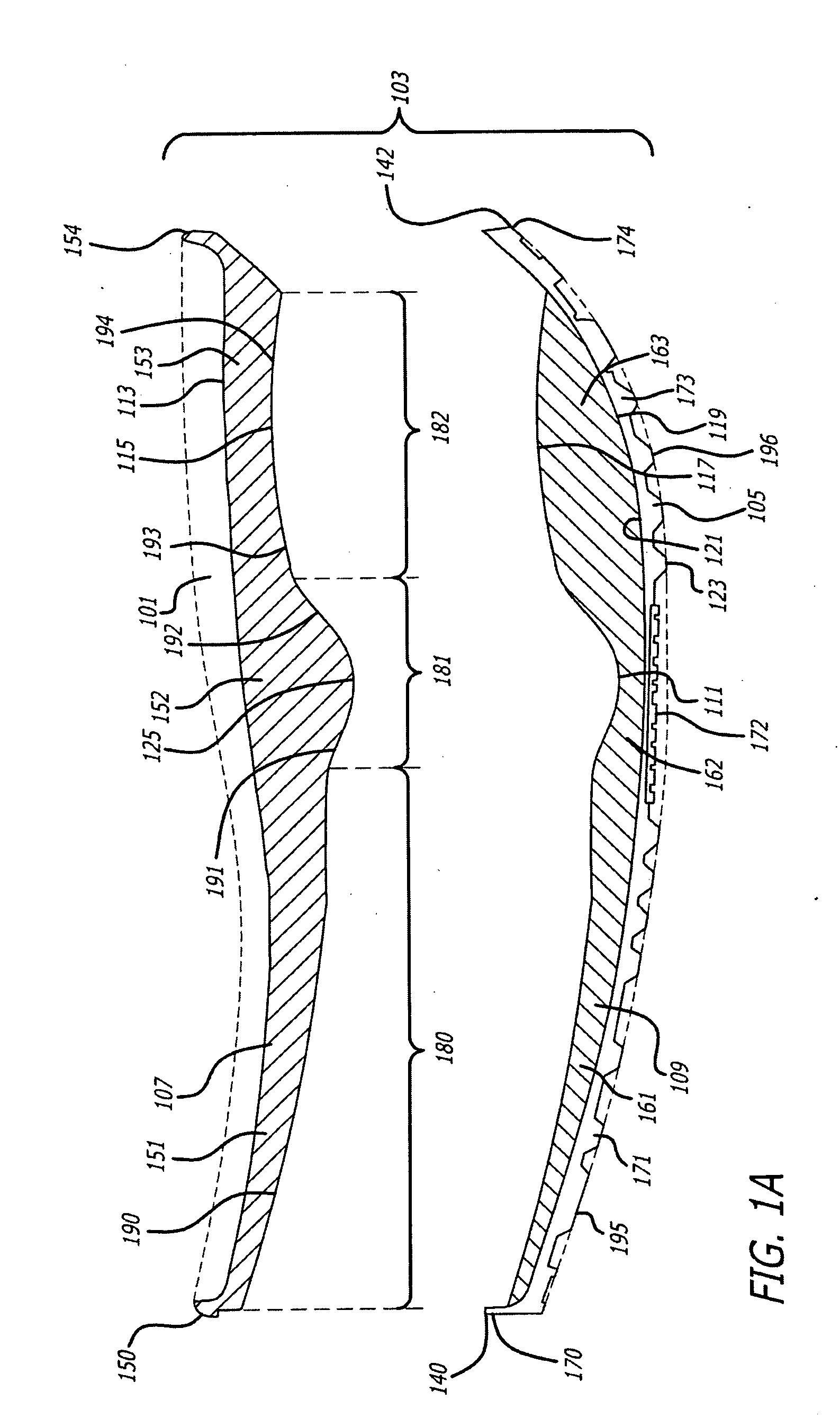Shoe
a technology of shoe and upper layer, applied in the field of shoes, can solve the problems of user's forced to overcome this abrupt, discrete pivot point, significant pain and discomfort, etc., and achieve the effects of increasing the compressibility of the lower layer, high compressibility, and increasing the concavity siz
- Summary
- Abstract
- Description
- Claims
- Application Information
AI Technical Summary
Benefits of technology
Problems solved by technology
Method used
Image
Examples
Embodiment Construction
[0039]The invention will now be described with reference to FIGS. 1 and 1A, which illustrate a side elevation view in cross section of the midsole 103. The outsole 105 is not part of the midsole 103. A sockliner 101 is not part of the midsole 103. The midsole 103 is shown beneath the sockliner 101. The outsole 105 of the shoe is beneath the midsole 103. The dual density midsole is located between the shoe upper (not shown) and the outsole 105.
[0040]The midsole 103, as shown in FIG. 1A, comprises an upper layer 107 and a lower layer 109. The upper layer 107 and / or the lower layer 109 may themselves each be comprised of two or more sub-layers. The upper layer 107 has a top surface 113 substantially opposite a bottom surface 115. The lower layer 109 has a top surface 117 substantially opposite a bottom surface 121.
[0041]The shoe has a front tip 140 located at the farthest point toward the front of the shoe and a rear tip 142 located at the farthest point toward the rear of the shoe. Th...
PUM
 Login to View More
Login to View More Abstract
Description
Claims
Application Information
 Login to View More
Login to View More - R&D
- Intellectual Property
- Life Sciences
- Materials
- Tech Scout
- Unparalleled Data Quality
- Higher Quality Content
- 60% Fewer Hallucinations
Browse by: Latest US Patents, China's latest patents, Technical Efficacy Thesaurus, Application Domain, Technology Topic, Popular Technical Reports.
© 2025 PatSnap. All rights reserved.Legal|Privacy policy|Modern Slavery Act Transparency Statement|Sitemap|About US| Contact US: help@patsnap.com



